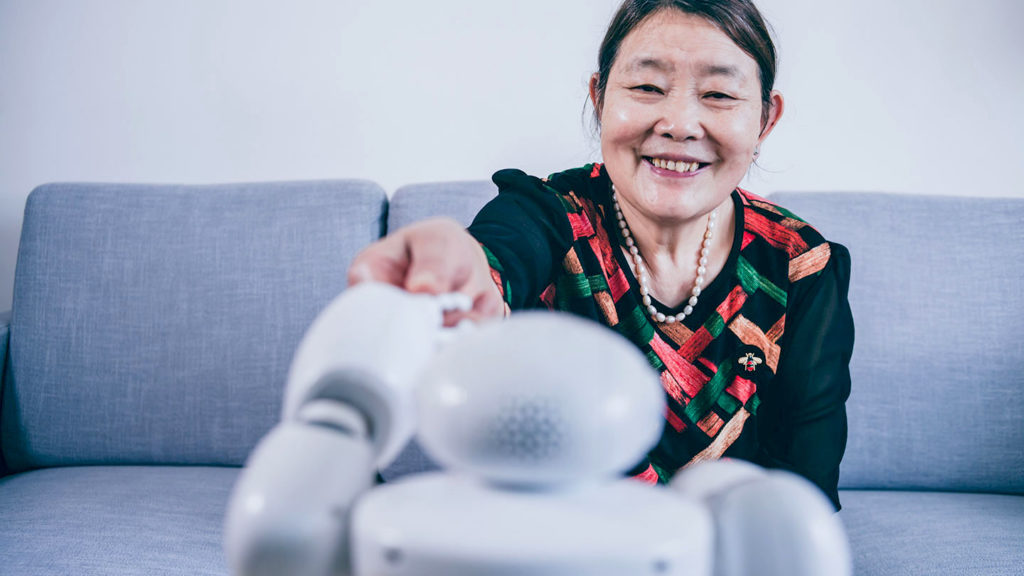
When it comes to using robots in senior living and care spaces, almost everyone agrees that robotic tools should complement caregivers’ roles, not replace them.
But achieving this goal is not as simple as plopping a well-meaning robot into a community or facility and assuming that the right outcome will occur, a new study contends.
Researchers have developed a data-recording system that is intended to capture events that occur for nursing care robots. The study, dubbed the Responsible Robotics Project, looked at interactions involving care robot Garmi, which is designed to assist with a variety of tasks within senior care environments, including making health diagnoses.
“We record all interactions with the robot to understand exactly what happened in case of an accident,” researcher Maximilian Braun said in a statement. “This documentation is enormously important, especially with the vulnerable demographics such as the elderly and persons with physical and intellectual disabilities that we deal with.”
The robot recording system model is designed to analyze as much of the human-robot interaction as possible and provide meaningful data while at the same time protecting older adults’ privacy and anonymity, the researchers added.
Although Garmi only is available in Europe — the study was conducted in Germany — similar humanoid models are available in the United States, including the weight-lifting assistant GR-1 and the chess-playing RYAN, or Robot You Always Need.
Interestingly, more direct studies on robotics may be necessary not to get skeptical caregivers to buy in into the technology but rather because they may be too confident that a robotic aid will be a net benefit, the researchers noted.
Younger nursing school graduates are enthusiastic about working with robots in senior care, although some are worried about how older adults themselves will react, one recent study found.
In addition, caregivers and long-term care administrators, already struggling with staffing shortages, are very excited about the prospect of shuffling administrative or routine tasks onto machines, as even automating the delivery of packages and food around a facility frees up staff members to work more directly with residents in need.
Overall, the combined innovations in robotics and artificial intelligence have produced a plethora of studies weighing both the practical and ethical considerations of their use in senior living and care over the past year.


